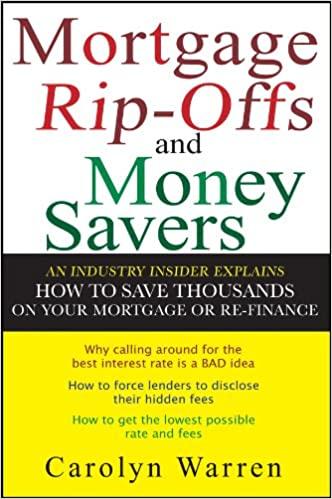Question
Thirteen months ago, this Department outlined an IBM option-stock hedge suggested by Skip Becker of Northbrook, III. Becker, of H.P. Becker & Co., purchased IBM
Thirteen months ago, this Department outlined an IBM option-stock hedge suggested by Skip Becker of Northbrook, III. Becker, of H.P. Becker & Co., purchased IBM at 50, bought one January 2020 45-strike call for each 100 shares, and sold two January 55s, bringing in cash equal to the cost of the in-the-money 45.
As Becker put it then, If the stock moves up 10%, your return will be 34%, including dividends; if it moves down 10%, youll lose 6%. At prices up to 65 (a 34% gain, with dividends, on the $50 stock), the options strategy offered superior gain potential to the shares alone, with less exposure to a big move down, because the investor is long only half as many shares. By last Januarys expiration, Big Blue has risen 10%, to 55.25, so Beckers clients realized the maximum possible gainand demonstrated that properly structured options strategies can be more conservative than investment in shares alone.
Last week, Cowens Harrison Roth set up a computer program to search for similar opportunities. That black box pointed to Caterpillar. With CAT trading at 114 Thursday, the August 110 call was offered at 10.50. Sale of two August 120s, on their 5.375 bed, would more than cover the cost of the 110. For someone considering purchase of 200 CAT versus buying 100 shares and the call option spread, the math (including dividends) is that the option approach outperforms return on capital on the share purchase alone, up to 130 at August expiration. If the stock goes to 120 and youre called on the two 120s sold, says Roth, youll make 10 points on the spread and six points on the covered write of the stock bought at 114 and delivered for 120. Plus $30 in dividends, so youll make $1,630 on $11,400. Thats a little over 14% in six months. And that ignores the net credit for putting
on the options spread.
QUESTIONS:
In the following questions, consider the following two investment strategies for investing in CAT:
-
Buy 200 shares of CAT.
-
Buy 100 shares of CAT, buy 100 August 110 calls, and sell 200 August 120 calls.
The dividend for the six months is $0.30 per share. The call option transactions are in units of 100 shares.
-
(10 points) Compare the rates of return on the two strategies for the following stock price ranges: P < $110, $110 < P < $120 and P > $120. It is claimed that up to a price of $130 per share strategy (b) outperforms strategy (a). Do you agree? Back up your assertion.
Show the calculation and find the precise price for which the two strategies yield the same rate of return.
-
(5 points) Explain why the return on strategy (b) is fixed at about 14% when the stock price is greater than $120.
Step by Step Solution
There are 3 Steps involved in it
Step: 1

Get Instant Access to Expert-Tailored Solutions
See step-by-step solutions with expert insights and AI powered tools for academic success
Step: 2

Step: 3

Ace Your Homework with AI
Get the answers you need in no time with our AI-driven, step-by-step assistance
Get Started


